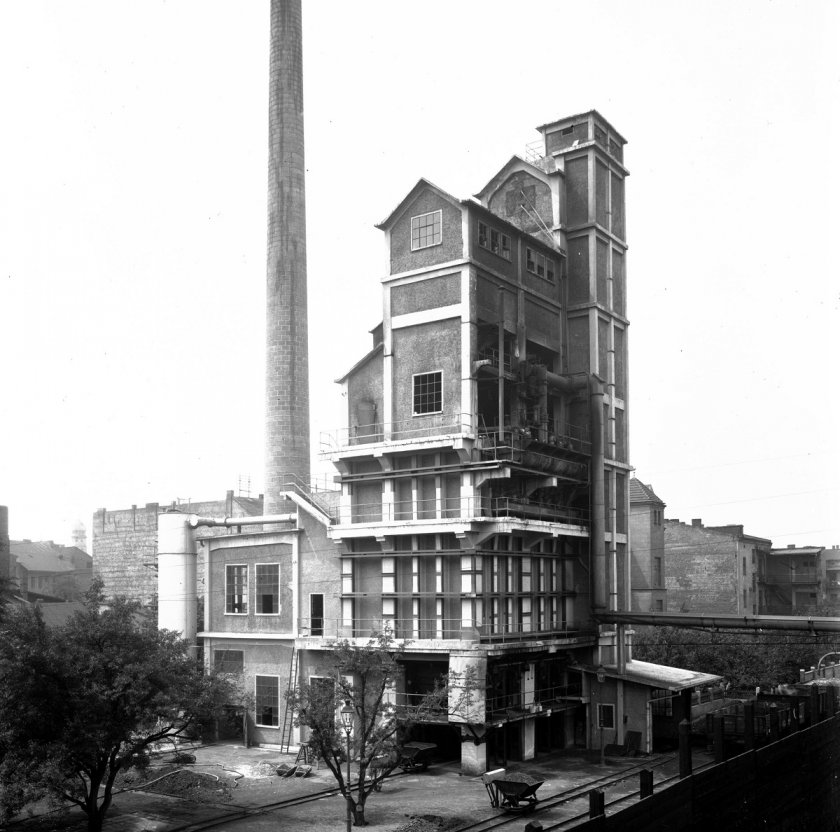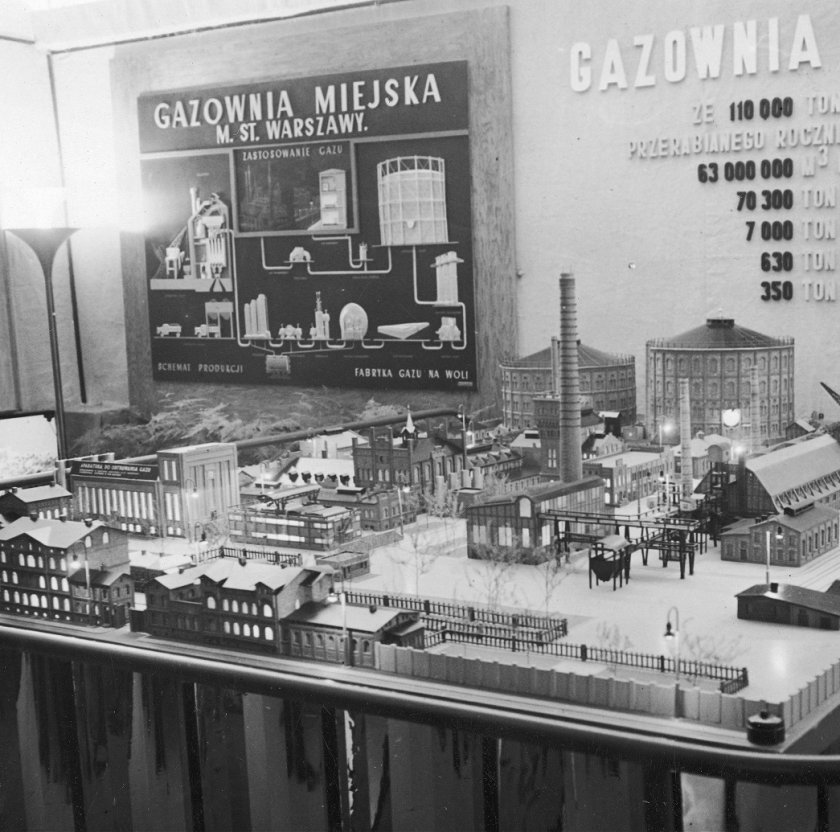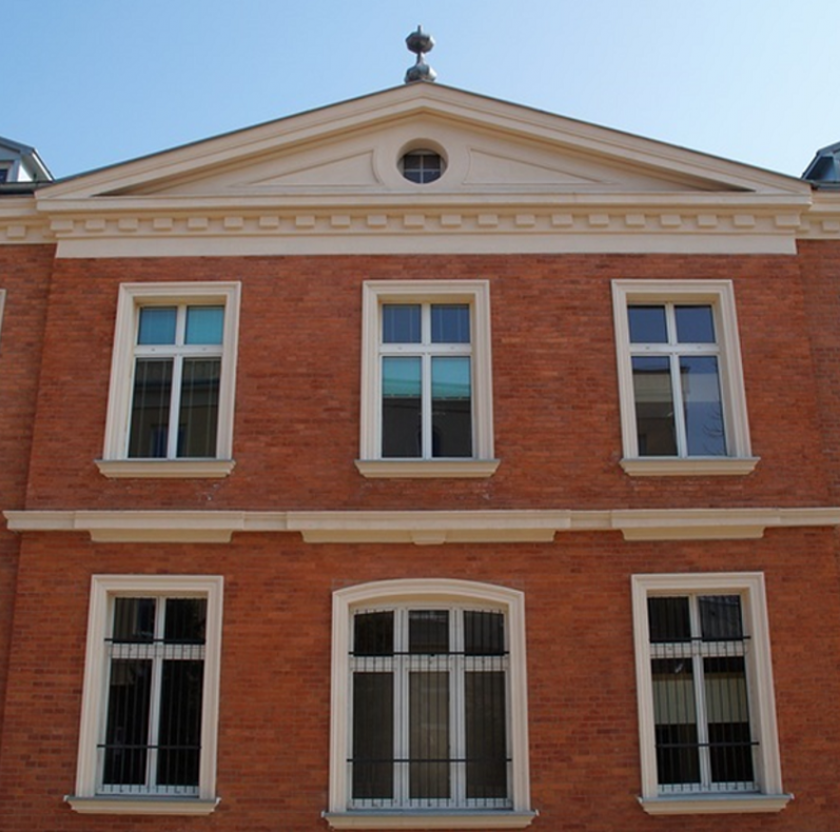History of the Wrocław Gasworks
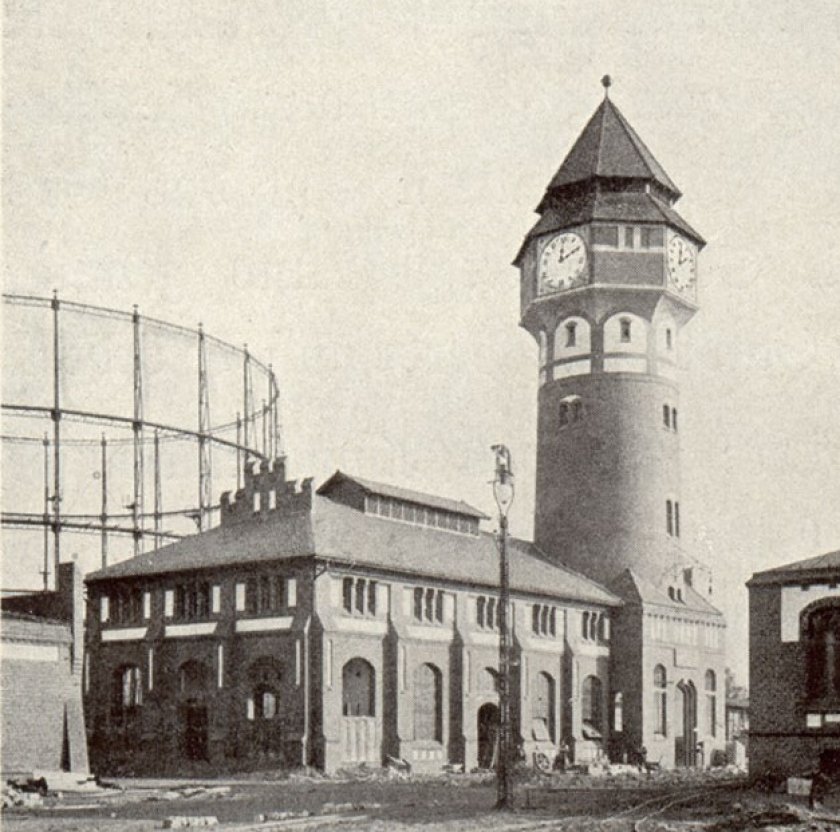 Fot. The ammonium plant and the high tanks tower at the Gasworks in Tarnogaj (Wrocław)
Fot. The ammonium plant and the high tanks tower at the Gasworks in Tarnogaj (Wrocław)
The interest in gas lighting increased very fast, so on 19 April 1845 the Wrocław City Council, headed by Mayor Julius Hemann Pinder, concluded an agreement concerning providing gas lighting for the city with two private entrepreneurs, Ferdynand Friedlander and Edward Szrbinowski. Already in the same year, their place was taken by the company Gas Aktien Gesellschaft, which started to construct the Gasworks in the spring of 1846.
The works were soon stopped due to a government protest. They were restarted only on 13 December 1846, and the construction works were supervised by Rudolf Blochmann, a renowned gasworks designer and a constructor of city lighting systems. The first Wrocław Gasworks was established in 1847, at 8–10 Tęczowa Street, and initially was called The Gas Lighting System Company in Wrocław (Die Gas Beleuchtung Anstalt). It was the first Gasworks in Lower Silesia. Successive ones were constructed, for example, in Zgorzelec (1854), Legnica and Jelenia Góra (1857), and Dzierżoniów and Wałbrzych (1863).
23 May 1847 was an important date in the history of the Wrocław gas industry. On that evening, in the area between the inner city moat and the River Odra, 758 gas lanterns - 637 four-armed and 121 six-armed candelabras - were lit for the first time. Already in the first years of the gasworks operations, the demand for gas was already very high. From the beginning, lighting gas supplied a system of gas lanterns. Still, in successive years, private consumers provided the increasing demand as they used gas to light the façades of their houses, yards, corridors, and stairs.
23 May 1847 was an important date in the history of the Wrocław gas industry. On that evening, in the area between the inner city moat and the River Odra, 758 gas lanterns - 637 four-armed and 121 six-armed candelabras - were lit for the first time. Already in the first years of the gasworks operations, the demand for gas was already very high. From the beginning, lighting gas supplied a system of gas lanterns. Still, in successive years, private consumers provided the increasing demand as they used gas to light the façades of their houses, yards, corridors, and stairs.
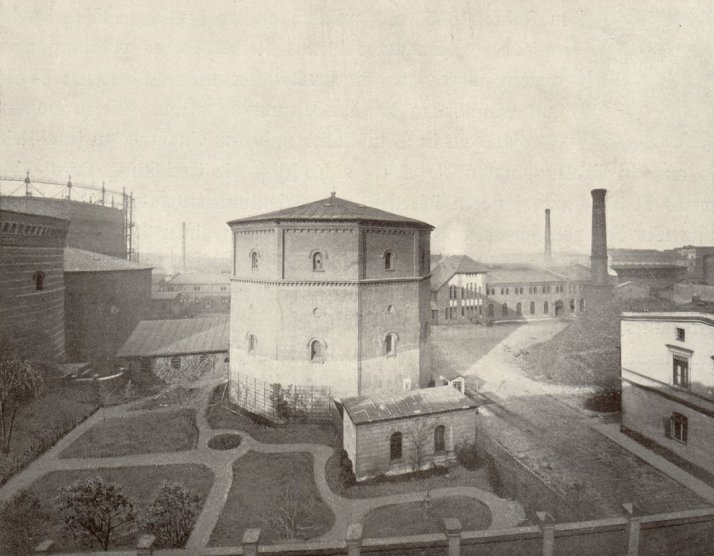
View of Plant I, Tęczowa Street
A robust dynamics of the demand increase forced the expansion of the Gasworks at Tęczowa Street. In 1852, the second furnace hall with 16 furnaces (of six retorts each) was constructed, while in the 1860s’, a decision was made to construct the fourth gas tank. However, that was not enough. Production capacities of the first Wrocław gasworks were limited, and with the increase in the number of citizens and rising demand for gas, it was necessary to construct and start up another production plant.
The gas deficit was exacerbated in particular when residential areas on the right bank of the River Odra, for example Ołbin, were expanded. On 13 October 1860, a special committee chaired by Mayor Julius Alexander Elwanger adopted a decision to construct the second Gasworks according to the design of engineer Wilhelm Kornhardt, a then-director of the Szczecin Gasworks and a former partner of Rudolf Blochmann. A decision about its location was made much later. On 20 March 1863, the City Council decided that the new plant would be erected at 3 Drzewny Square (now Powstańców Warszawy Square).
The gas deficit was exacerbated in particular when residential areas on the right bank of the River Odra, for example Ołbin, were expanded. On 13 October 1860, a special committee chaired by Mayor Julius Alexander Elwanger adopted a decision to construct the second Gasworks according to the design of engineer Wilhelm Kornhardt, a then-director of the Szczecin Gasworks and a former partner of Rudolf Blochmann. A decision about its location was made much later. On 20 March 1863, the City Council decided that the new plant would be erected at 3 Drzewny Square (now Powstańców Warszawy Square).
The 2nd Gasworks was put into operation on 28 October 1864, and its annual capacity amounted to 775 thousand cubic meters. It was located on the left river bank and supplied gas to the districts of Odrzańskie, Piaskowe, Oławskie and Mikołajskie Przedmieścia.
Despite the construction of the second plant, the problem of production shortages quickly returned due to the fast-increasing demand for gas. Soon after its start-up, the new Gasworks had to be modernised, and the main works were conducted in the 1870s (e.g., a new furnace hall and another gas tank were put into operation). At that time, the 1st and the 2nd Gasworks reached their maximum production level. In 1871, the annual gas consumption in Wrocław, amounting to 8,166,198 cubic meters, was hardly covered by supplies from both Gasworks. The forecasts showed that in successive years, the demand for gas would continue to increase, and this was influenced, in particular, by a significant growth in the number of Wrocław inhabitants in the 1870s’, which continued until the end of the 19th century (for example, in 1880-1899 the number of Wrocaw inhabitants rose from 271 thousand to 411 thousand).
Despite the construction of the second plant, the problem of production shortages quickly returned due to the fast-increasing demand for gas. Soon after its start-up, the new Gasworks had to be modernised, and the main works were conducted in the 1870s (e.g., a new furnace hall and another gas tank were put into operation). At that time, the 1st and the 2nd Gasworks reached their maximum production level. In 1871, the annual gas consumption in Wrocław, amounting to 8,166,198 cubic meters, was hardly covered by supplies from both Gasworks. The forecasts showed that in successive years, the demand for gas would continue to increase, and this was influenced, in particular, by a significant growth in the number of Wrocław inhabitants in the 1870s’, which continued until the end of the 19th century (for example, in 1880-1899 the number of Wrocaw inhabitants rose from 271 thousand to 411 thousand).
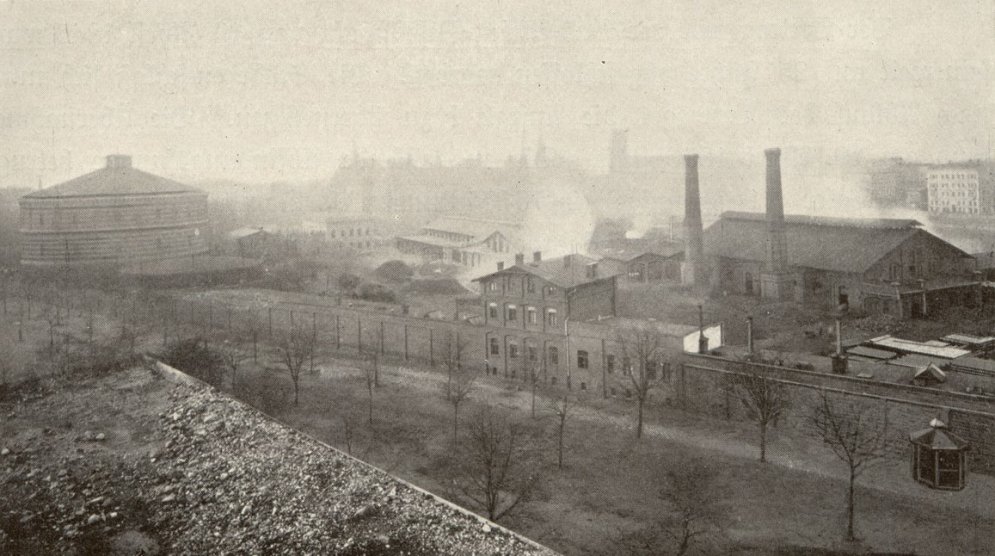
View of Plant II, Powstańców Warszawy Square
With time, both Gasworks were connected by a main equalising pipeline routed through Kotlarska Street, Market to Podwale and Tęczowa Street. In 1871, after 25 years of its operation by a private company, the Wrocław authorities purchased the 1st Gasworks for ca. 2.8 million marks, and in consequence, the local government became the sole owner of all gas facilities in the city (two Gasworks, the gas network, and the street lighting).
The city authorities started to consider a decision concerning the construction of another gas plant in the city. This time, the building was to be erected on the right Odra bank and produce gas for the needs of the northern and eastern regions of the city. The investment works were initiated in 1877, and two years later, works were temporarily suspended due to the increasing competition from electricity. In 1880, a decision was made that this construction was, after all, justified, and on 1 August 1881, another plant (the 3rd Gasworks), equipped with a system of generator furnaces and a telescopic gas tank, was finally put into operation at today’s Trzebnicka Street.
The city authorities started to consider a decision concerning the construction of another gas plant in the city. This time, the building was to be erected on the right Odra bank and produce gas for the needs of the northern and eastern regions of the city. The investment works were initiated in 1877, and two years later, works were temporarily suspended due to the increasing competition from electricity. In 1880, a decision was made that this construction was, after all, justified, and on 1 August 1881, another plant (the 3rd Gasworks), equipped with a system of generator furnaces and a telescopic gas tank, was finally put into operation at today’s Trzebnicka Street.
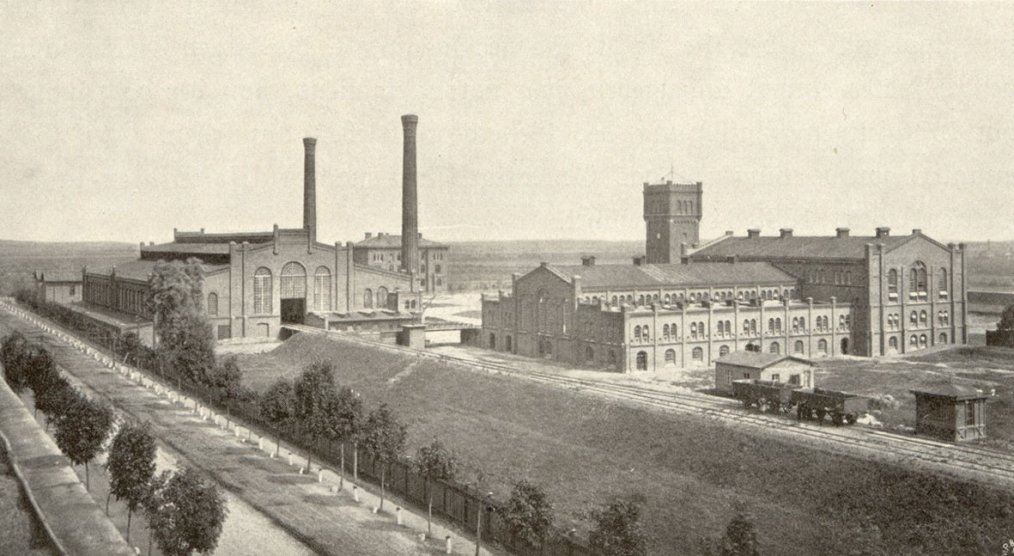
View of Plant III, Trzebnicka Street
At that time, Wrocław was developing fast, and the gas demand continuously increased. Now it was used not only to light streets and houses, as it was at the beginning, but also had become a common source of energy used to heat and drive household appliances, as well as fuel for industrial purposes. The number of gas lanterns also increased robustly - in 1901, Wrocław was lit by over 6.6 thousand such lanterns; in 1909, there were over 10 thousand of them already, and three years later, their number reached 12.3 thousand. At the turn of the 19th century, the total production capacity of three Wrocław gasworks amounted to 23 million cubic meters a year. However, every year, gas consumption in Wrocław increased by as much as 9%, and this meant that gas shortages could occur again already in 1906. For this reason, a need to construct new Gasworks, much larger than previous ones, in another part of the city.
In 1904, a decision was made to erect a modern gas production plant of a production capacity meeting needs of Wrocław citizens and with modern technical equipment. On 10 November 1906, the construction of the Gasworks at Gazowa Street in the Tarnogaj district (former Dürrgoy) was completed, and at that time, it was one of the largest and most modern ones in Europe.
In 1904, a decision was made to erect a modern gas production plant of a production capacity meeting needs of Wrocław citizens and with modern technical equipment. On 10 November 1906, the construction of the Gasworks at Gazowa Street in the Tarnogaj district (former Dürrgoy) was completed, and at that time, it was one of the largest and most modern ones in Europe.
Tarnogaj is a district that was included in the city two years earlier. The main factor decisive for the gasworks location was the vicinity of the train line, connecting Wrocław with the Upper Silesia Industrial Centre. The plant had a complete set of units for gas cooling, rinsing and purification, as well as its own railway siding, which significantly facilitated supplies of coal to the coking plant, a furnace hall equipped with 30 furnaces of nine retorts each, 75 m long and 36 m wide in total, and two gas tanks of 110 thousand cubic meters each.
After the 4th Gasworks was put into operation, older Gasworks in the city were successively phased out. The Gasworks at Tęczowa and Trzebnicka Streets were converted into supply stations and gas pumping stations, with tanks for storing production to cover peak demand. The gas tanks remaining in operation were supplied from Tarnogaj through a high-pressure network and connected with a low-pressure network through a gas pressure regulator. With this solution, the same gas pressure could be achieved in the entire gas network in the city.
After the 4th Gasworks was put into operation, older Gasworks in the city were successively phased out. The Gasworks at Tęczowa and Trzebnicka Streets were converted into supply stations and gas pumping stations, with tanks for storing production to cover peak demand. The gas tanks remaining in operation were supplied from Tarnogaj through a high-pressure network and connected with a low-pressure network through a gas pressure regulator. With this solution, the same gas pressure could be achieved in the entire gas network in the city.
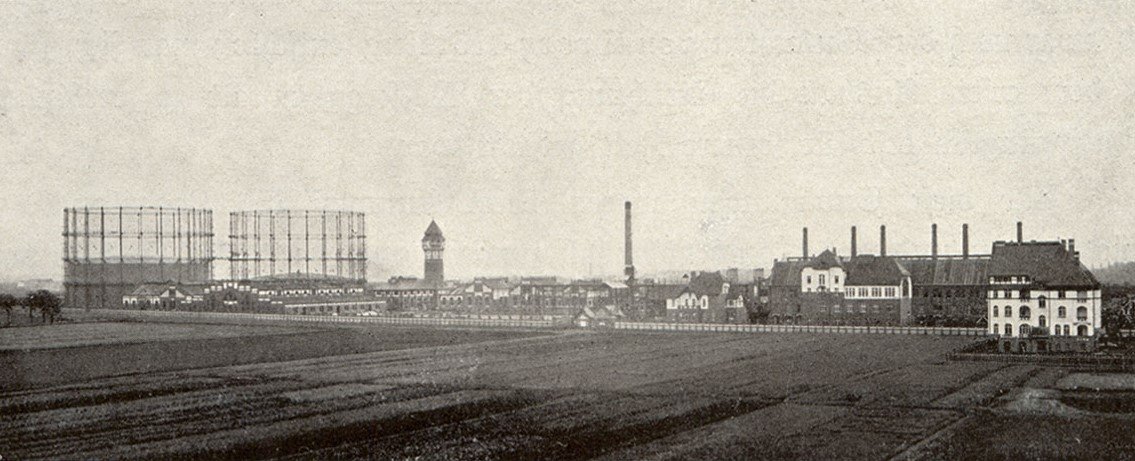
View of Plant IV, Tarnogaj
Since 1927, the needs of citizens and the industry of the city, inhabited by over 500 thousand people, had been covered solely by the plant in Tarnogaj. In the 1920s’, the annual gas production capacity of the 4th gasworks amounted to ca. 70 million cubic meters. In the 1920s and 1930s, production equipment was intensively modernised and expanded. For example, original furnaces were replaced with innovative multi-chamber furnaces. The construction of another new gasworks was also planned.
However, preparations for WWII resulted in the discontinuation of all activities for gasworks modernisation and expansion, and the plant was transferred under the supervision of the general state administration. In the 1940s, to supplement gas shortages caused by the development of the arms industry, coke gas was supplied to Wrocław from Wałbrzych through the constructed gas line DN-350. In 1942, the Gasworks was connected to the so-called Dalgaz network and started to play a gas manufacturer and compression station role.
However, preparations for WWII resulted in the discontinuation of all activities for gasworks modernisation and expansion, and the plant was transferred under the supervision of the general state administration. In the 1940s, to supplement gas shortages caused by the development of the arms industry, coke gas was supplied to Wrocław from Wałbrzych through the constructed gas line DN-350. In 1942, the Gasworks was connected to the so-called Dalgaz network and started to play a gas manufacturer and compression station role.
During WWII, significant gas shortages occurred, especially in the arms industry. At that time, gas was produced at any cost, overloading production and purifying equipment. War activities contributed to further destruction. On 24 May 1945, when the Polish administration took over the ruined Wrocław Gasworks from Soviet authorities, about 60% of the gas-producing equipment, 50–80% of network equipment and 100% of the lighting system in Wrocław were destroyed. At the Gasworks itself, out of 232 plant, office and residential buildings, only 20 could be used (the majority of them being residential buildings).
Already on 7 August 1945, due to the sacrifice and hard work of a handful of men, the partly reconstructed Gasworks in Tarnogaj started to produce gas. The official historical lighting of the first gas flame took place in Karłowcie, in the gasworks director building, on 22 August 1945. In 1947, half of all production equipment was already started, and 33.4 million cubic meters of gas were produced, but the pre-war level of production was reached only five years later.
Already on 7 August 1945, due to the sacrifice and hard work of a handful of men, the partly reconstructed Gasworks in Tarnogaj started to produce gas. The official historical lighting of the first gas flame took place in Karłowcie, in the gasworks director building, on 22 August 1945. In 1947, half of all production equipment was already started, and 33.4 million cubic meters of gas were produced, but the pre-war level of production was reached only five years later.
The middle of the 1960s’ was associated with the reconstruction and start-up of a block of diagonal chamber furnaces. This operation was conducted using, for the first time in Europe, the modern fast technology for firing gas furnaces within 12 to 14 days, instead of 90 days, as it used to be earlier.
At the end of the 1970s, the traditional production of municipal gas, started to be discontinued. Costs of coal gas production were increasingly higher, and what is more, in 1972, nitrogenous natural gas was discovered in Wierzchowice near Milicz, which was then delivered to Wrocław. The discovery of successive gas deposits in various areas of the country opened new perspectives but also presented new challenges. It became necessary to efficiently transport gas over large distances, and this resulted in an intense expansion of main networks from the end of the 1980s.
At the end of the 1970s, the traditional production of municipal gas, started to be discontinued. Costs of coal gas production were increasingly higher, and what is more, in 1972, nitrogenous natural gas was discovered in Wierzchowice near Milicz, which was then delivered to Wrocław. The discovery of successive gas deposits in various areas of the country opened new perspectives but also presented new challenges. It became necessary to efficiently transport gas over large distances, and this resulted in an intense expansion of main networks from the end of the 1980s.
Thus, high-methane natural gas replaced coal gas, which was manufactured at the Wrocław Gasworks for over one hundred and forty years. Production of municipal gas was gradually limited, and production in successive plants was phased out in the entire Lower Silesia. In August 1990, after 84 years of operation, gas production in Tarnogaj, Wrocław, ended, and in 1998 the plant in Międzylesie, the last traditional Gasworks in Poland, was closed.
